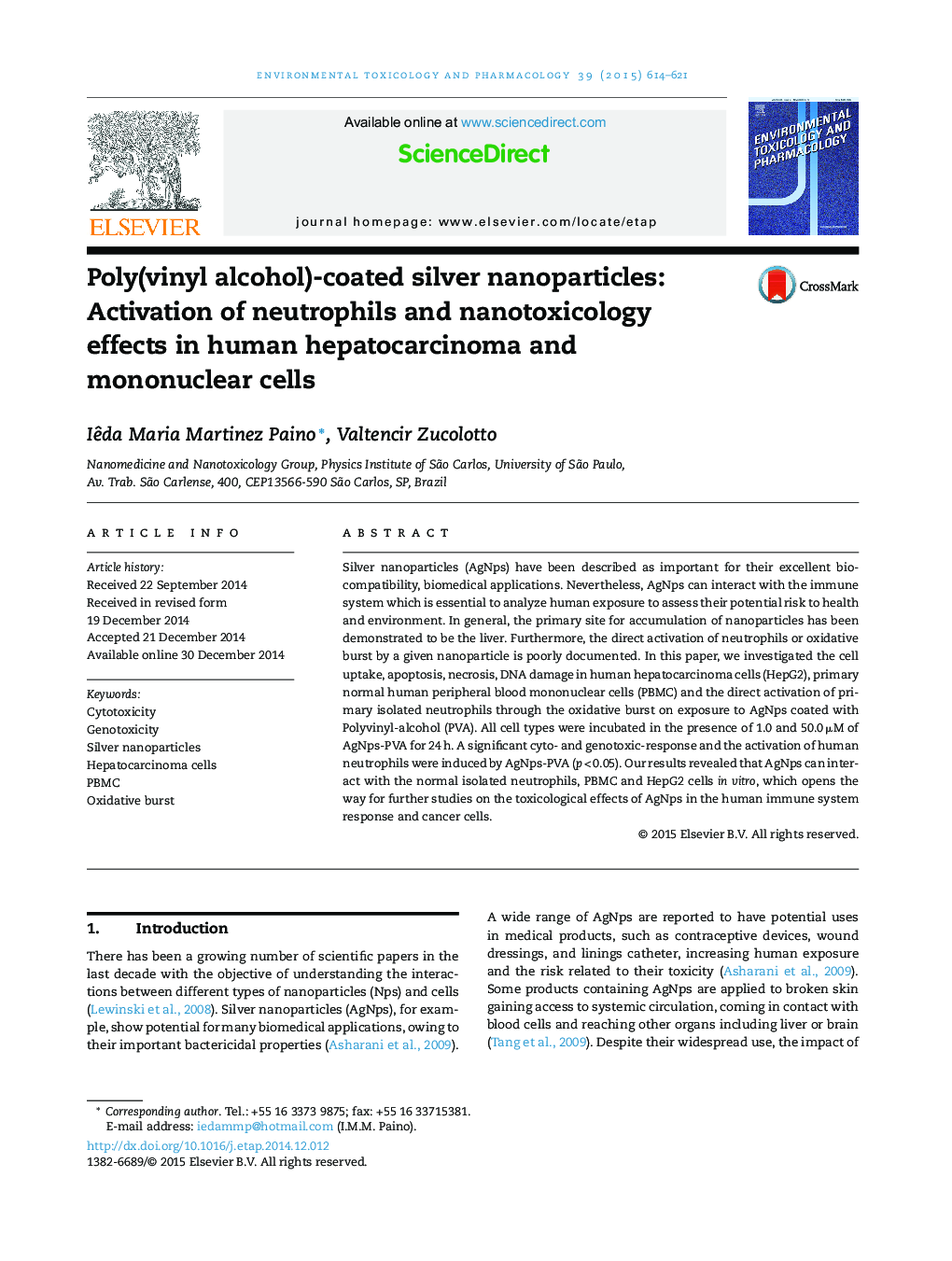| Article ID | Journal | Published Year | Pages | File Type |
|---|---|---|---|---|
| 5848803 | Environmental Toxicology and Pharmacology | 2015 | 8 Pages |
â¢AgNps-PVA effects in human cancer and primary human immune cells were proposed.â¢AgNps-PVA increased the oxidative burst in primary isolated human neutrophils.â¢AgNps-PVA can interact with human primary PBMC and liver carcinoma cells.
Silver nanoparticles (AgNps) have been described as important for their excellent biocompatibility, biomedical applications. Nevertheless, AgNps can interact with the immune system which is essential to analyze human exposure to assess their potential risk to health and environment. In general, the primary site for accumulation of nanoparticles has been demonstrated to be the liver. Furthermore, the direct activation of neutrophils or oxidative burst by a given nanoparticle is poorly documented. In this paper, we investigated the cell uptake, apoptosis, necrosis, DNA damage in human hepatocarcinoma cells (HepG2), primary normal human peripheral blood mononuclear cells (PBMC) and the direct activation of primary isolated neutrophils through the oxidative burst on exposure to AgNps coated with Polyvinyl-alcohol (PVA). All cell types were incubated in the presence of 1.0 and 50.0 μM of AgNps-PVA for 24 h. A significant cyto- and genotoxic-response and the activation of human neutrophils were induced by AgNps-PVA (p < 0.05). Our results revealed that AgNps can interact with the normal isolated neutrophils, PBMC and HepG2 cells in vitro, which opens the way for further studies on the toxicological effects of AgNps in the human immune system response and cancer cells.
